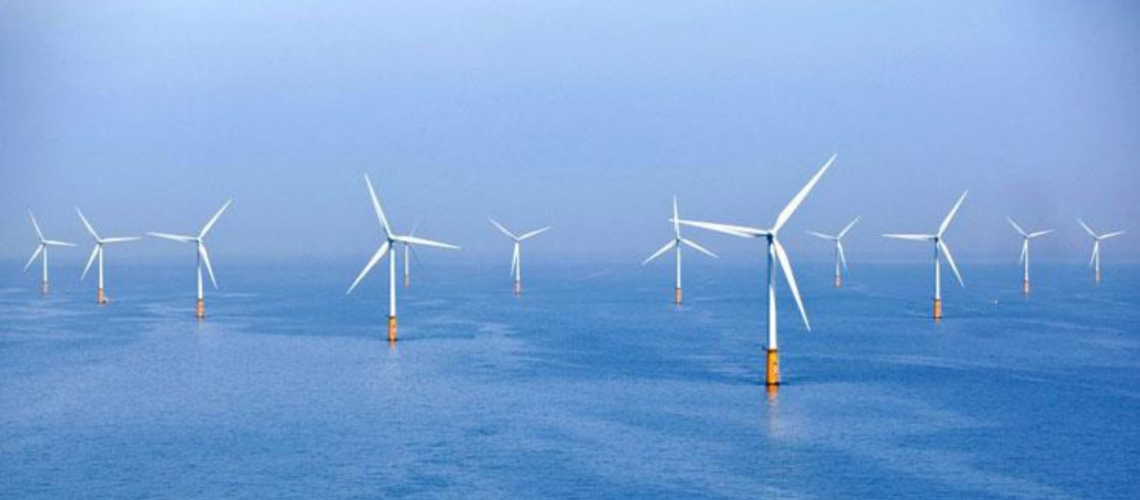You are here
Could Wind Farms Power Every UK Home by 2030?

Peter Wurmsdobler conduced an analysis on UK Prime Minister's pledge that "Wind farms could power every home by 2030" BBC. While Peter was certain that the Prime Minister had been well advised before making such a statement, he wondered if the numbers stack up and whether this pledge is feasible, or overly ambitious, or simply — put Boris Johnson's own words — "an inverted pyramid of piffle". Peter made use of a range of data sets, including the CDRC's Domestic Energy Provider — Aggregated data dataset.
Overall, the answer is this is potentially possible, but as ever with this type of analysis, the devil is in the detail.
First of all, could the total amount of energy required by the UK in 2030 be generated by wind? The electricity demand in 2030 is predicted to be around 100TWh/annum. In 2019, the UK generated about 64TWh of electricity, leaving a shortfall of about 36TWh. Currently new wind farms are being setup at a rate of around 8TWh/annum, so it would only take about another 4.5 years to add the needed 36TWh to get to the total of 100TWh, so this should be doable by 2025.
If we extend the definition of total energy to include gas (i.e. counting both electricity and gas), then the target would be about 200TWh/annum. Starting at 64TWh in 2019 and with the current trend with of additional wind energy of 8TWh/annum, it would take 17 years to get to 200TWh/annum; i.e. the year 2036. We would need to increase the rate of wind farm setup to somewhere between 12TWh and 16TWh to get to our target by 2030. So overall, doable but challenging, I would say.
Peter wrote a much more detailed post on this at https://peter-wurmsdobler.medium.com/could-wind-farms-power-every-uk-home-by-2030-energy-analysis-396e1bfa5ab8 - check it out if you want more details.
The other major aspect to consider is the power requirements. With the energy analysis above, we ignored the fact that when wind farms generate energy and when people want to use energy don't match. So therefore the energy would need to be stored, something that is quite challenging.
To look at this in a bit more detail, there are several clear patterns to energy usage, with a very clear seasonal (annual) pattern and daily pattern.

Figure 1: Electricity (left) and gas (right) annual (top) and daily (bottom) usage patterns.
The annual variation is quite larger (from a low of ~5 GW to a high of ~40 GW for gas and ~2GW to ~6.5 GW for electricity) with the daily variations being a bit lower (~4 GW to ~32 GW for gas and ~1.5 GW to 5 GW for electricity).
With a few calculations, Peter worked out the need for energy storage over the year (based on wind generation patterns and usage patterns).

Figure 2: Projected evolution of an energy store for 2030.
The total amount of energy storage would be about 23.65TWh, equivalent to about 236 million Tesla
Model X Long Range batteries (100kWh), i.e. 8 batteries per home for the 30 million UK homes.
We can also look at the variations over different temporal scales, to see what the storage requirements would be:
- annual fluctuation of 20.976TWh, i.e. winter/summer, or about 209 million 100kWh batteries, i.e. 7 batteries per home
- daily fluctuation of 43.715GWh, i.e. night/day cycle, or about 437,151 100kWh batteries, i.e. or a 1.5kWh
battery per home
- half-daily fluctuation of 29.234GWh, i.e. morning/evening, or about 292,335 100kWh batteries, i.e. a 1kWh
battery per home
While the daily and half-daily fluctuation could be met with a combined 2.5kWh battery per home, the annual or seasonal fluctuation is a bit more challenging. There are a number of different approaches to this, including consuming less energy in winter (primarily through increasing insulation in buildings), importing / exporting energy from an outside source (e.g. from Europe via interconnectors which we do already, but this would need to be expanded or further afield, e.g. globally), or by managing demand using variable pricing (e.g. Octopus energy offer some variable pricing tariffs, e.g. Octopus Go (https://octopus.energy/go/), Octopus Intelligent (https://octopus.energy/intelligent-faqs/) or Octopus Agile (https://octopus.energy/agile/).).
Overall, the bottom line is: the total domestic energy demand is likely to be met by wind power generation in 2030; however, literally powering every UK home with wind power will not easily be possibly without significant amount of energy storage (domestic or national) and other energy balancing measures.
The figure of 23.65TWh is only indicative of the order of magnitude, i.e. we are talking about tens of TWh to get an idea of what would be required.
For more details please read Peter's posts on Medium:
- Could Wind Farms Power Every UK Home by 2030? — Energy Analysis
- Could Wind Farms Power Every UK Home by 2030? — Power Analysis